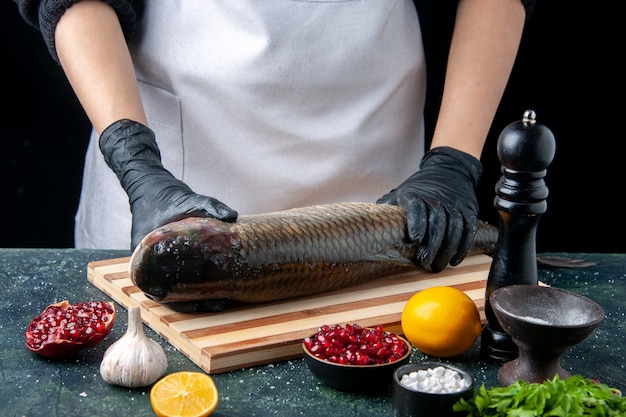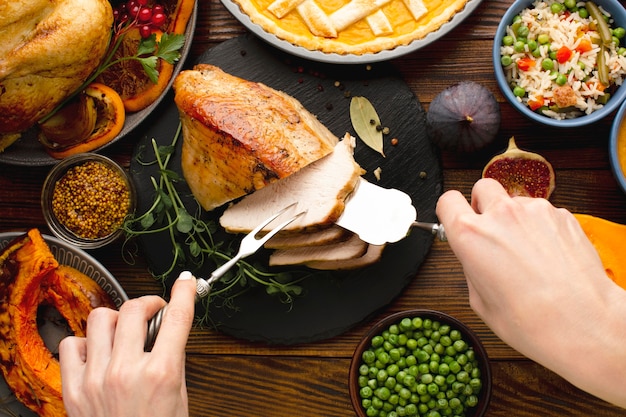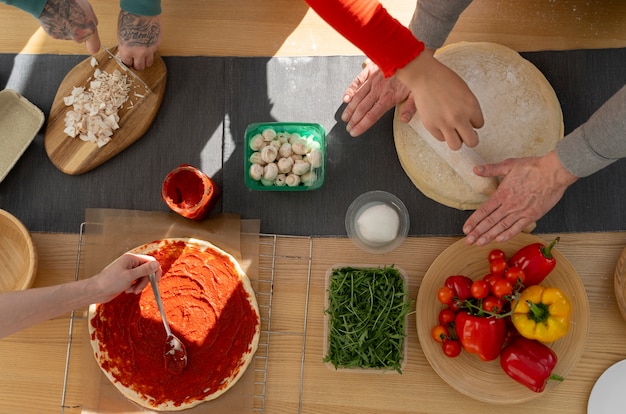Let’s talk about halibut, shall we? There’s something about its beautiful white flesh, its firm texture, that just screams "delicious dinner." But getting it perfectly cooked can be a bit tricky. You see, halibut, like most fish, can go from beautifully cooked to dry and overdone in the blink of an eye. So, today, I’m sharing everything I’ve learned over the years about how to nail that perfect halibut cook, every single time.
We’ll start with the basics, understanding what makes halibut unique and how to choose the right piece. Then, we’ll dive into the different cooking methods, from pan-frying and grilling to baking and roasting. We’ll even discuss some of the challenges, like those pesky bones, and tackle those common questions that keep popping up. By the end of this, you’ll be a halibut master chef, ready to impress your friends and family with your newfound skills.
(Part 1) Understanding Your Halibut

You’ve probably seen halibut in the fishmonger’s or at the supermarket, maybe even had it on a restaurant menu. But do you actually know what it is? Let me tell you a bit about this magnificent creature.
The Halibut’s Tale
Halibut is a flatfish, a fascinating group of fish that live on the ocean floor. You know, those ones that look like they’re laying on their side? Well, the halibut is a champion of that group, reaching massive sizes. Some can grow up to eight feet long and weigh over 500 pounds! Now, I haven’t caught one that big, mind you, but it’s a good thing to know, especially if you’re trying to imagine how much you’ll be eating.
The funny thing is, most of us probably don't even realize that we're eating one half of a fish! The halibut's left or right eye is the top side, and the flat underside is the part we usually see at the fishmonger's. It's a fascinating bit of natural design.
Where’s My Halibut From?
The halibut we enjoy in our kitchens comes mainly from the North Atlantic and the North Pacific. They’re a cold-water fish, so they have a firm texture and a delicate flavour. I always find that they have a slight sweetness that makes them so versatile to cook with.
What to Look For in a Good Halibut
When choosing your halibut, look for these signs of freshness:
- The Eyes: The eyes should be clear and bright, not cloudy or sunken.
- The Gills: The gills should be a vibrant red colour, not pale or discoloured.
- The Smell: It should smell clean and fresh, not fishy or ammonia-like.
- The Texture: The flesh should be firm and springy to the touch, not soft or mushy.
If you’re buying frozen halibut, make sure it’s been properly frozen and isn’t covered in ice crystals. The packaging should be intact, and the fish should have a solid appearance.
(Part 2) Preparation is Key

Right, now that you know a little bit about your halibut, let’s talk about getting it ready for cooking.
The Skin
The first thing to consider is the skin. Some people love to eat it, and it can add a nice crisp texture to your meal. But I tend to remove it. It’s a personal preference, really. If you’re leaving it on, give it a quick rub with some olive oil and salt before cooking. This helps it crisp up nicely.
Sourcing Your Halibut
When choosing your halibut, make sure it’s fresh. It should smell clean and have a firm texture. If it’s slimy or smells fishy, it’s best to avoid it. If you’re buying frozen, make sure it’s been properly frozen and isn’t covered in ice crystals.
Thicken Up!
You want to make sure your fish is evenly thick, so if it’s a bit wonky, give it a trim. This makes for more even cooking. And if you're working with a thick fillet, you might want to score it diagonally, creating a grid pattern, to ensure that the heat penetrates evenly.
(Part 3) The Perfect Cook

Now, here’s the heart of the matter, the part that separates a good cook from a halibut hero: the actual cooking time. This is where things get a little tricky, but don’t worry, I’ll guide you through it.
Factors Affecting Cook Time
There are a few things that affect how long you need to cook your halibut. These include:
- The thickness of the fish: Thicker fillets take longer to cook than thinner ones. This is why it's important to be aware of your halibut's thickness before you start cooking.
- The cooking method: Different methods, like pan-frying, baking, or grilling, require different cook times. Each method uses a different kind of heat transfer, so the time it takes for the fish to reach the desired internal temperature will vary.
- The desired level of doneness: Do you want it flaky and moist, or a bit firmer? If you prefer a flaky texture, cook it for a shorter amount of time. For a firmer fish, cook it a bit longer.
Temperature Matters!
You’ve got to get the temperature right, otherwise, you’ll end up with a dry, rubbery fish, and nobody wants that. A good thermometer is your best friend here. It’s especially handy for thicker pieces. I recommend cooking halibut to an internal temperature of 140°F (60°C).
You might be wondering why 140°F, and not the usual 145°F? Well, halibut is a lean fish, and cooking it to 145°F can result in a dry, overcooked texture. 140°F is the sweet spot for a beautifully moist and flaky halibut.
Cooking Times: A Guide
Okay, let’s get into some practicalities. Here’s a guide to cooking times for different methods and thicknesses:
| Method | Thickness (Inches) | Cooking Time (Minutes) |
|---|---|---|
| Pan-frying | 1/2 inch | 3-4 |
| 1 inch | 5-7 | |
| 1 1/2 inches | 8-10 | |
| Baking | 1/2 inch | 12-15 |
| 1 inch | 18-20 | |
| 1 1/2 inches | 25-30 | |
| Grilling | 1/2 inch | 4-6 |
| 1 inch | 7-9 | |
| 1 1/2 inches | 10-12 |
Now, these are just estimates. Keep a close eye on your fish, you know, just give it a little peek. It should be opaque, not translucent, and flake easily with a fork. You don’t want to overcook it, trust me, it’s a real shame.
(Part 4) Pan-Frying Like a Pro
Right, let’s talk about pan-frying, one of my favourite ways to cook halibut. It’s quick, easy, and results in a beautifully crispy exterior and moist interior.
The Equipment
You’ll need a good quality frying pan, preferably cast iron. It heats evenly and retains heat well, which is important for getting that perfect crust. Also, use a good quality oil, like olive oil or grapeseed oil, with a high smoke point.
Remember, a hot pan is key for pan-frying halibut. You want the pan to be hot enough for the fish to sizzle when you add it, but not so hot that it burns.
The Technique
Firstly, heat your oil over medium-high heat. You want it hot enough to sizzle when you add the fish, but not so hot that it burns. Then, carefully place your seasoned halibut fillets in the pan. Don’t overcrowd the pan, give them space to cook evenly. The more space the fish has, the better it will brown and cook evenly.
Cook for 3-4 minutes on each side, or until golden brown and cooked through. Remember, your trusty thermometer is your friend here. You want that internal temperature to be at 140°F (60°C).
A good way to check for doneness without a thermometer is to gently press the fish with a spatula. If it easily flakes, it's cooked through.
The Finish
Once cooked, remove the halibut from the pan and let it rest for a few minutes before serving. This allows the juices to redistribute, making for a juicier and more flavorful fish. Serve with your favourite sides, like roasted vegetables, mashed potatoes, or a simple green salad.
(Part 5) Baking to Perfection
Now, baking is a great way to cook halibut for a larger crowd, especially if you want to avoid the fuss of pan-frying multiple fillets.
The Preparation
Firstly, preheat your oven to 400°F (200°C). Then, line a baking sheet with parchment paper or tin foil. This will make cleaning up a breeze. Place your seasoned halibut fillets on the baking sheet, making sure they are not touching. You don’t want them to steam, which can make them soggy.
If you want a crispy skin, you can bake the halibut skin-side up. The skin will crisp up nicely in the oven.
The Baking Process
Bake for 12-15 minutes for 1/2 inch thick fillets, or longer for thicker fillets, until cooked through and flaky. Again, your thermometer is your best friend here. Make sure that internal temperature hits that 140°F (60°C) mark.
The Final Touch
Once cooked, remove the halibut from the oven and let it rest for a few minutes before serving. This is a great opportunity to prepare your sides while the halibut rests.
(Part 6) Grilling for Summertime Delights
Now, who doesn’t love grilling in the summer? It’s a great way to cook halibut, especially if you’re looking for a smoky, chargrilled flavor.
The Setup
Clean your grill and preheat it to medium-high heat. You want a nice hot grill, but not so hot that it burns your fish.
The Grilling Technique
Season your halibut fillets with salt, pepper, and any other spices you like. Then, place them on the grill, making sure they don’t stick. You might want to brush the grill grates with a little oil to prevent sticking.
The Time is Now
Grill for 4-6 minutes per side, or until cooked through and flaky. Again, don’t forget your thermometer. This will help you avoid overcooking and end up with dry fish.
Finish with Style
Remove the halibut from the grill and let it rest for a few minutes before serving. Serve with a squeeze of lemon, a drizzle of olive oil, and your favourite side dishes.
(Part 7) Dealing with Those Pesky Bones
Now, halibut, as much as we love it, can sometimes have a few pesky bones.
The Bone Detective
There’s a good chance you’ve encountered those little bones, you know, the ones that get stuck in your teeth. It’s important to check your halibut carefully before cooking and remove any visible bones. This is just a safety measure.
Prevention is Key
Here are a few tips to prevent those stubborn bones from getting in the way:
- Ask for boneless fillets: If you’re buying your halibut from a fishmonger, ask for boneless fillets. They can usually remove the bones for you, saving you some time and effort.
- Buy smaller fillets: Smaller fillets are less likely to have large bones. They’re also easier to cook, in my opinion.
- Check for bones: Always check your fillets carefully before cooking. Even if you’ve purchased boneless fillets, there might be a stray bone or two lurking.
- Bone-in Halibut? Yes! While we try to avoid bones, it's not always necessary. Bone-in halibut, especially when roasted, adds a richness of flavour. Just make sure you remove the bones after cooking.
(Part 8) FAQs: Your Halibut Queries Answered
Right, now that you’re getting the hang of it, you probably have a few questions. Let’s tackle some of the most common ones:
1. What are the best ways to season halibut?
Halibut is so versatile, you can season it with just about anything you like. Here are a few of my favorites:
- Simple: Salt and pepper – Sometimes, the simplest things are the best. A good pinch of salt and pepper enhances the natural flavour of the fish.
- Citrusy: Lemon and dill – A squeeze of lemon juice and some fresh dill adds a bright, refreshing flavour.
- Mediterranean: Olive oil, garlic, and oregano – This combination creates a delicious and fragrant flavour that’s perfect for halibut.
- Spicy: Chili flakes and paprika – If you like a bit of heat, add some chili flakes and paprika to your seasoning mix.
- Herbs and spices: Try experimenting with different herbs and spices like thyme, rosemary, sage, or ginger.
- Brown Butter and Sage: The richness of brown butter combined with the earthy aroma of sage creates a luxurious flavour pairing for halibut.
- Roasted Garlic and Lemon: Roast some garlic cloves until soft and caramelized, and then blend them with lemon juice and olive oil for a fragrant and flavourful sauce.
2. Can I freeze halibut?
Yes, you can freeze halibut. It’s a great way to store it for later. Just make sure you wrap it tightly in plastic wrap or aluminum foil to prevent freezer burn. It can be frozen for up to 3 months.
3. How can I tell if halibut is cooked through?
Here’s how you can tell if halibut is cooked through:
- Opacity: The flesh should be opaque, not translucent, when cooked.
- Flaking: The fish should flake easily with a fork.
- Internal temperature: The internal temperature should reach 140°F (60°C).
- The Feel: The fish should feel firm to the touch, not soft or squishy.
4. What are some good side dishes for halibut?
Halibut is a versatile fish that pairs well with many side dishes. Here are a few ideas:
- Roasted vegetables: Roasted vegetables, like asparagus, broccoli, or Brussels sprouts, provide a nice contrast in texture and flavour.
- Mashed potatoes: creamy mashed potatoes are a classic pairing for halibut.
- rice pilaf: A simple rice pilaf adds a touch of elegance to the meal.
- Green salad: A fresh green salad adds a healthy and refreshing touch.
- Pasta salad: A pasta salad with fresh vegetables and a light vinaigrette is a great way to make the meal more substantial.
- Risotto: A creamy risotto with mushrooms, asparagus, or peas complements the delicate flavour of halibut.
- Roasted Root Vegetables: Roasted root vegetables like carrots, parsnips, and potatoes add a sweet and earthy flavour that contrasts nicely with the fish.
5. What are some common mistakes to avoid when cooking halibut?
Here are a few common mistakes to avoid:
- Overcooking: Halibut is a delicate fish that can easily be overcooked. Make sure you don’t cook it for too long, or you’ll end up with dry, rubbery fish.
- Undercooking: Undercooked halibut can be unsafe to eat. Make sure you cook it to an internal temperature of 140°F (60°C) to ensure it’s cooked through.
- Crowding the pan: Don’t overcrowd the pan when pan-frying halibut. This will prevent it from cooking evenly and can lead to steaming rather than browning.
- Using too high heat: When grilling or pan-frying halibut, avoid using too high a heat. This can cause the fish to burn on the outside before it cooks through on the inside.
And that’s it, my friend. Now you’re ready to conquer the world of halibut, one delicious meal at a time. Remember, practice makes perfect. Keep experimenting with different methods and seasonings, and you’ll be a halibut maestro in no time. Happy cooking!
Everyone is watching

Prime Rib Roast Cooking Time Chart: Per Pound Guide
Cooking TipsPrime rib roast. Just the name conjures images of lavish dinners, crackling fires, and hearty laughter. It’s ...

How Long to Bake Potatoes in the Oven (Perfect Every Time)
Cooking TipsBaked potatoes are a staple in my kitchen. They're incredibly versatile, delicious, and surprisingly easy to m...

Perfect Rice Every Time: The Ultimate Guide to Cooking Rice
Cooking TipsAs a self-proclaimed foodie, I've always been a bit obsessed with rice. It's the foundation of countless cuisi...

The Ultimate Guide to Cooking Asparagus: Tips, Techniques, and Recipes
Cooking TipsAsparagus. The mere mention of this spring delicacy conjures up images of vibrant green spears, crisp and burs...

Ultimate Guide to Cooking the Perfect Thanksgiving Turkey
Cooking TipsThanksgiving. Just the word conjures up images of overflowing tables laden with delicious food, the scent of r...
